Aerospace Clusters on the Go!
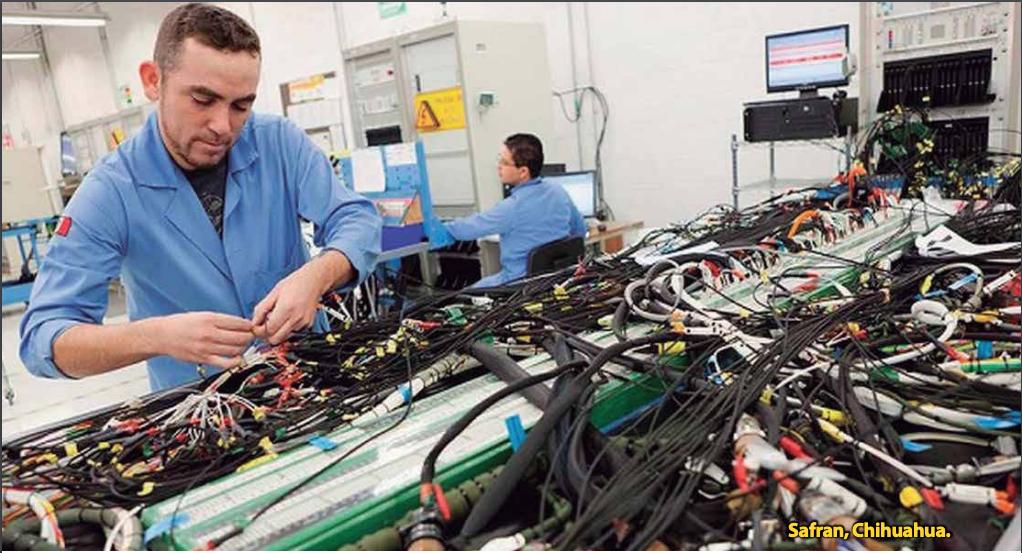
Warning: foreach() argument must be of type array|object, bool given in /home/mexiconow/public_html/sites/mexiconow/wp-content/themes/mexiconowwpnew/single.php on line 254
By Iván Iglesias
In recent years, the aerospace industry has had a marked relevance in the world. This sector moves around US$1.27 trillion dollars a year globally, employs more than one million direct workers and accounts for nearly
4 million indirect jobs.
In Mexico, this industry is one of the sectors with the greatest potential and dynamism in the national economy due to the high degree of technology of its products, generation of specialized jobs, as well as its linkage with other productive sectors (first-, second- and third-Tier suppliers). According to industry analysts, the potential of aerospace domestic supply in Mexico is enormous.
However, in order to take advantage of this potential, Mexico needs to develop new suppliers and invite Mexican companies to bet on it. The large aerospace clusters that are scattered throughout the national territory are
an important part of this enormous work.
According to aerospace engineer, Michael Eugene Porter, a cluster is the concentration of interconnected companies and institutions, with the intention of incorporating links in their production chain and new technologies in their processes. It is a triple helix made up of first-rate manufacturers, along with academic and government institutions related
to the field.
In particular, the clusters of Chihuahua, Monterrey, and Querétaro serve as true “beachheads” in the hard work of developing businesses, suppliers and human talent to enrich the national aerospace production chain.
The case of Chihuahua
For René Espinosa, president of the Chihuahua Aerospace Cluster, “need”
is the key word. “When we understand the root of industrial needs, we see the importance of a cluster, since it allows the organic development of an industry. Thanks to this, we have managed to be recognized as an ecosystem that encourages the growth of companies, the insertion of national SMEs in this sector, educational development, and the attraction of new international companies.”
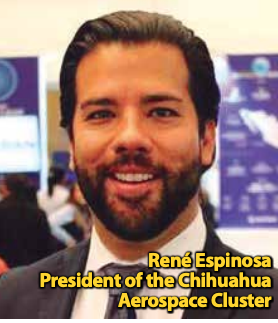
Developing local talents in the aerospace sector is one of the most relevant challenges. “There is no doubt that talent is what allows the industry to grow,” says Espinosa. Especially the design part is “where as a country we
have the challenge of going from ‘manufacturing’ to ‘mind manufacturing.’ Our constant challenge as a cluster is to work with the academy to close the
gap between education and productive development.” In particular, the Chihuahua Aerospace Cluster is working with nine universities on education projects adapted to the needs of the sector. “Roughly speaking, we are generating nearly 1,000 engineers per semester in programs related to the aerospace industry.”
For its part, the development of national suppliers is another of the challenges of the clusters. “In the aeronautical sector, 97% of its products come from other countries,” Espinosa says. “In FEMIA’s supplier development program, nearly US$1.2 billion of opportunity have been identified to provide the Mexican aeronautical sector as a national industry.
The challenge here is for the country to understand the needs of the aeronautical industry, which is becoming increasingly competitive
internationally.”
The case of Monterrey
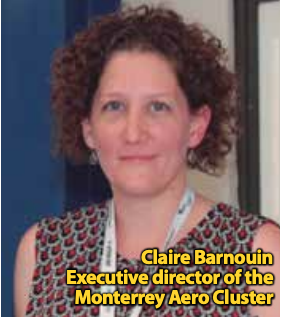
For Claire Barnouin, executive director of the Monterrey Aero Cluster, the position is similar to that of Chihuahua. “The cluster is strategically positioned from the perspective of connecting the value chain, business
opportunities with potential suppliers, and the needs of buyers with manufacturing capabilities. What we are looking for is to generate links
to increase the participation of our region in this industry.”
Within the areas of opportunity for the sector in general, Barnouin comments that the need to change the area of action of many OEMs is something that is already being presented in this 2020 “They are looking to concentrate their value chains on the same continent, instead of having its chain pulverized on other continents. This is a great opportunity for Mexico, and we [as a cluster] must implement a development and
support plan for companies so that when they have the opportunity to belong to these aerospace suppliers, they are ready to take it.”
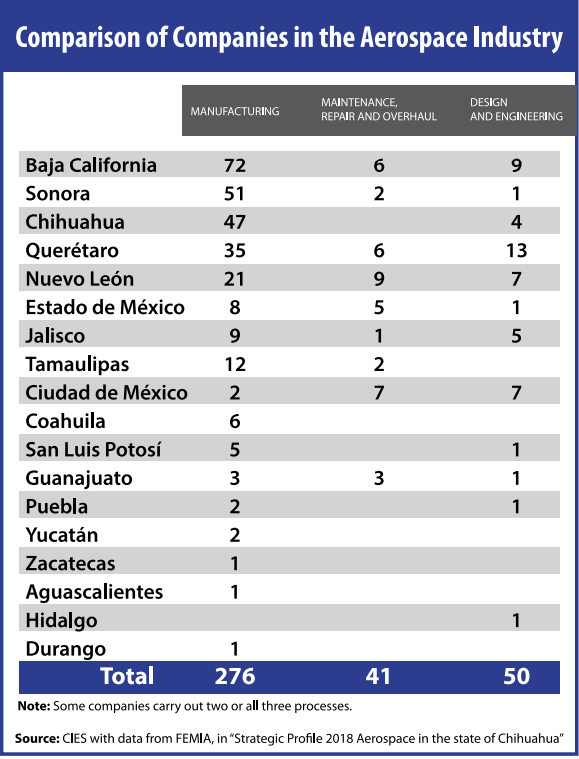
The case of Querétaro
Currently, the state of Querétaro has more than 80 companies
in this industry, including universities, research centers, Tier 1 and 2 companies, OEMs, original design manufacturers, airlines, logistics companies.
This entity has acquired great dynamism for its aero cluster. “A 4.8% growth in the aircraft fleet is expected in Latin America by 2037, which means at least 2,700 new aircraft,” Antonio Velázquez, general director of the Querétaro Aero Cluster, reported recently. “Therefore, the requirement of at least 68,000 new technicians is also expected.” Within this context, the cluster analyzes strategies so that the aerospace sector in Querétaro can adapt to future needs.
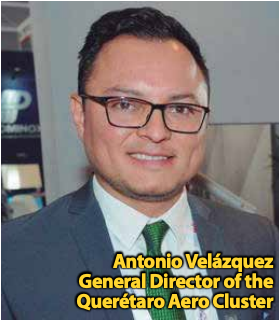
Despite the caution that marks the current slowdown in the sector due to the COVID-19 crisis, the aerospace sector must continue working proactively. “The aerospace industry is an industry that is globally
articulated and its supply is connected to many regions in the world,” said Velázquez. “What we have to do is prepare to be more resilient if there are
to be major changes.”
In this sense, the generation of talents becomes essential for the entity, and its cluster in particular. For example, the Aeronautical University in Querétaro (UNAQ) considers a growth of more than 20,000 people in the state within the aerospace industry during the following 10 years. This
expectation presents important challenges in the development and training of personnel in the technical, engineering and human resource management area.
Velázquez has expressed in various forums that there is a demand for 2,500 specialized workers in the sector for the next three years, for which reason it seeks to develop agreements to encourage specialized education in the
area. “The attraction of new talent involves secondary, preparatory, technical and engineering schools that could not properly be aeronautical,
but that are required in the sector. The important challenge is to increase the added value of what is done in our country and increase the capabilities that we have locally.”
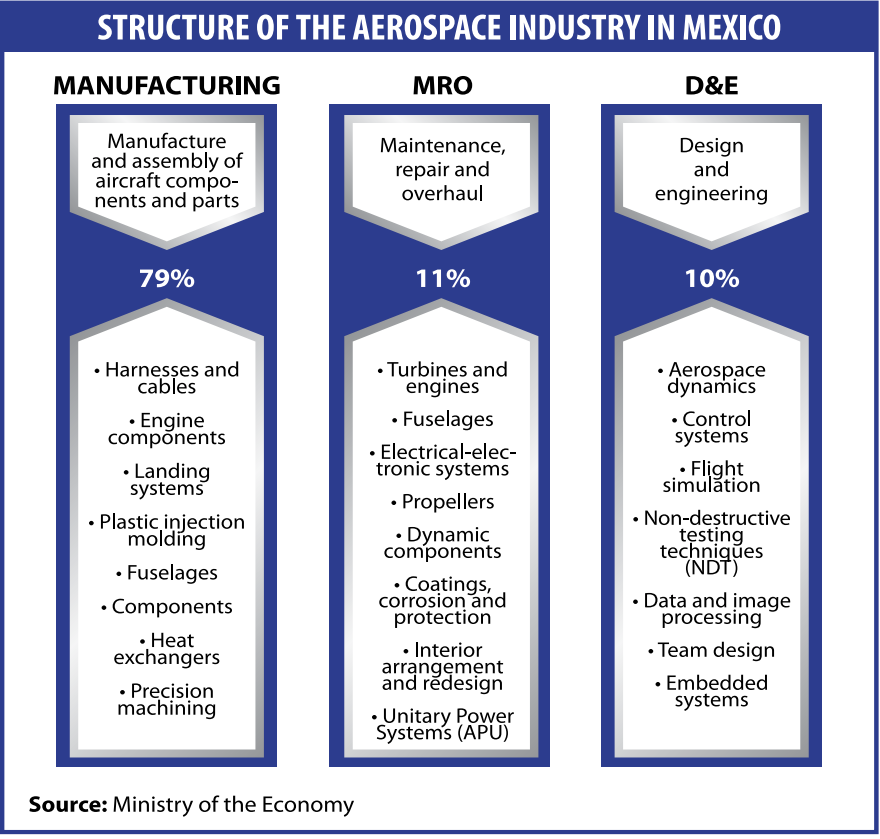
The opportunities
Due to the current slowdown in the industry caused by the COVID-19 pandemic, it has been necessary to seek new areas of opportunity nationwide. For the aero clusters of Chihuahua, Monterrey, and Querétaro
there are two key elements: education and national supply. On the one hand, the creation of talent is essential, because the more growth the sector
has, the more professionals it will demand. Likewise, FEMIA data indicates that 35% of the 110 companies adhered to the organization are of Mexican origin, while the rest are foreign, so one of the main objectives of the
clusters is to promote and add more Mexican companies to this industry.
In the case of Chihuahua, “many companies are seeking the relocation of their projects in North America (the USMCA comes to strengthen the regionalism of the three countries that signed it). It is there where we have to take advantage of that opportunity in the next three years,”
Espinosa said.
For the director of the aero cluster in Monterrey, the future of the cluster should be more comprehensive: “[In 10 years] I would like to see a more
integrated cluster at the regional level, with players from South Texas and the entire Northeast region, where there is designed innovation and technological development programs that take advantage of the design
and manufacturing capabilities that we have locally.”
For the Querétaro Aero Cluster, the integration of national firms within supply chains implies a priory objective in the state. The director has stressed on several occasions that it is necessary to develop the industrial fabric of Querétaro to enhance the installed capabilities of the aerospace sector, specifically SMEs. As can be seen, the future of the aerospace sector demands a lot of caution since the current crisis marks a slow recovery of this industry.
However, the three aero clusters (Chihuahua, Monterrey, and Querétaro)
agree that in order to achieve this, it is necessary to act in coordination. The key issue for them is to pose it from the perspective of a solid triple helix where the public, private and academic sectors are given the same voice so that together they achieve full development of the sector and thus contribute to the economic detonation of the country.





